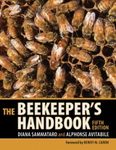By: AJM Loomans(Author), JC van Lenteren(Author), MG Tommasini(Author), S Maini(Author), J Riudavets(Author)
201 pages, 24 b/w illustrations and b/w maps, 31 tables
![Biological Control of Thrips Pests Biological Control of Thrips Pests]()
Click to have a closer look
About this book
Customer reviews
Related titles
About this book
This book contains the following three contributions:
Frankliniellaoccidentalis and other thrips harmful to vegetable and ornamental crops in Europe
In this review the status of the thrips pest species in Europe and in particular of Frankliniella occidentalis (Western Flower Thrips), the most important pest thrips in Europe nowadays, is reported based on literature information up to December 1992. Different genera are mentioned amongst the Terebrantia suborder and of the Thripidae family: Thrips, Taeniothrips, Heliothrips, Parthenothrips, Hercinothrips and two genera of the sub-order Tubulifera, family Phlaeothripidae: Liothrips and Haplothrips. Some information regarding the biology, distribution and host plants (bionomics) is summarized. In general the damage induced by thrips, in relation to the different parts of the plant attacked, is discussed. The indirect damage like transmission of viruses, bacteria and fungi is described too. Regarding F. occidentalis, also systematic notes and an accurate study of the biology, its distribution in Europe, of the plants damaged worldwide and in Europe in particular, are represented. The typical damages induced by Western Flower Thrips on different crops are discussed. A short presentation of methods of sampling is indicated.
Predators of Frankliniella occidentalis and Thrips tabaci
Frankliniella occidentalis and Thrips tabaci, vectors of the tomato spotted wilt virus, have become increasingly important agriculture pests, both in the open field and in greenhouses. These thrips are difficult to control chemically and treatments have to be repeated frequently, causing residue problems and disrupting Integrated Pest Management programs that have been adopted. Use of biological control systems may help to reduce both pest populations and virus incidence. In this article the present state of biological control research using predators is reviewed as a first step towards selecting suitable candidates. The most studied families of predators are Phytoseiidae and Anthocoridae. For each predator, the information published in the literature up to November 1993 and the characteristics of each species as a good natural enemy are discussed.
Hymenopterous parasitoids of thrips
As part of a study on the biological control of thrips pests in European greenhouses, a general literature review has been carried out on thrips parasitoids. Except for data already published on this group, information has been supplemented with data of yet unpublished records obtained by checking museum material and by personal communication, until December 1993. Thrips parasitoids all belong to the superfamily Chalcidoidea. Most of them are solitary endoparasitoids of larvae (Eulophidae) or eggs (Mymaridae, Trichogrammatidae) of thrips (Thysanoptera). Except for some odd species in the genus Thripasrichus (Eulophidae: Tetrastichinae) and Pediobius (Eulophidae: Entedontinae), all larval parasitoids can be found in four closely related genera: Ceranisus, Goetheana, Thripobius and Entedonastichus (Eulophidae: Entedontinae). They all are solitary, internal parasitoids of the larval stages, although sometimes the prepupae and/or pupae may be attacked. Parasitoids belonging to the genus Megaphragma (Hymenoptera: Trichogrammatidae) and Pediobius indicus (Hymenoptera: Mymaridae) are known to parasitize thrips eggs.
In this review data of genera and species are presented on the distribution, host range, host plant associations, biology and behaviour of thrips parasitoids and their effectiveness as control agent of thrips pests, including several new records. Based on this information, their effectiveness is evaluated and specified pre-introduction criteria are formulated for selection of parasitoids as potential biological control agents of thrips pests, in particular those occurring in European greenhouses. Information on parasitoids is scattered and very incomplete, both on biology and taxonomy. A taxonomic revision of thrips parasitizing genera and species is therefore strongly recommended.
Customer Reviews
By: AJM Loomans(Author), JC van Lenteren(Author), MG Tommasini(Author), S Maini(Author), J Riudavets(Author)
201 pages, 24 b/w illustrations and b/w maps, 31 tables




































